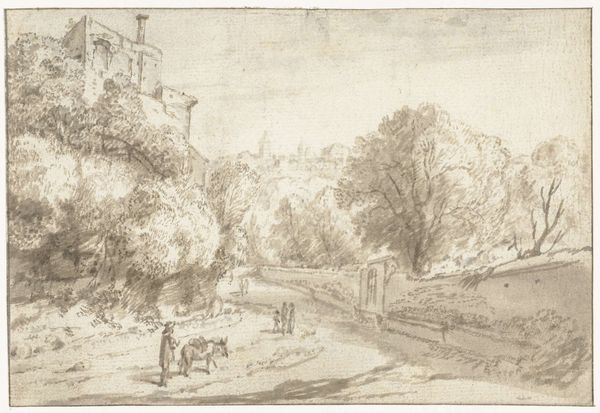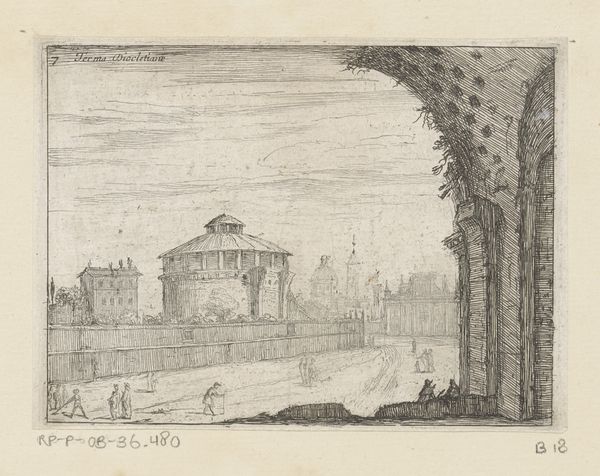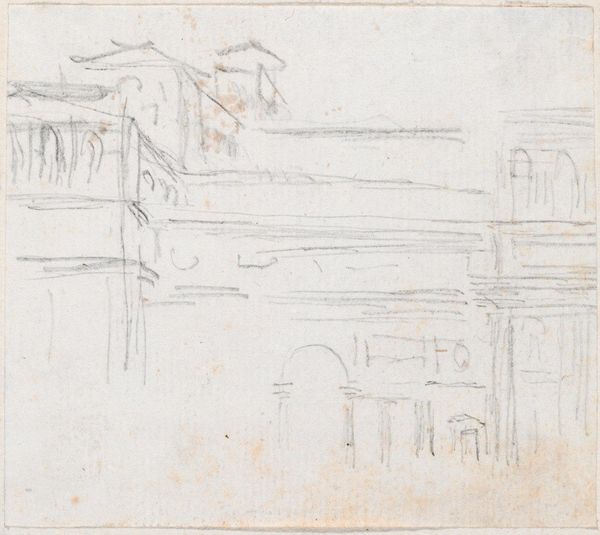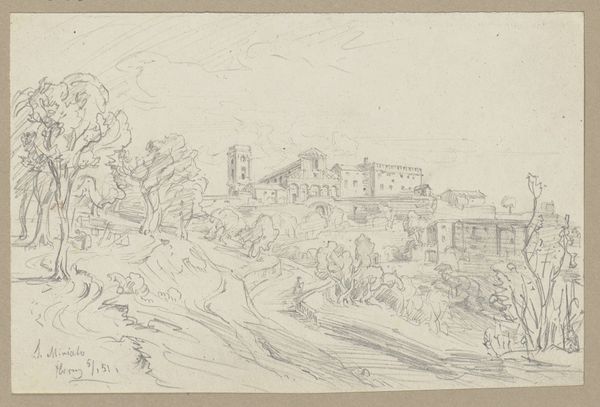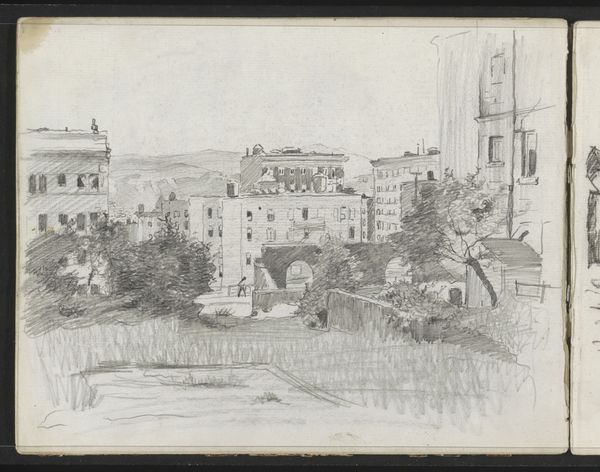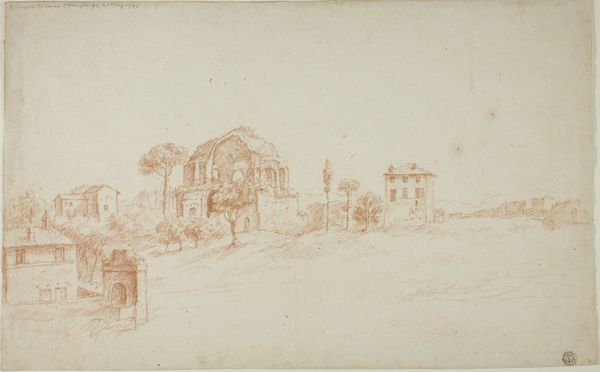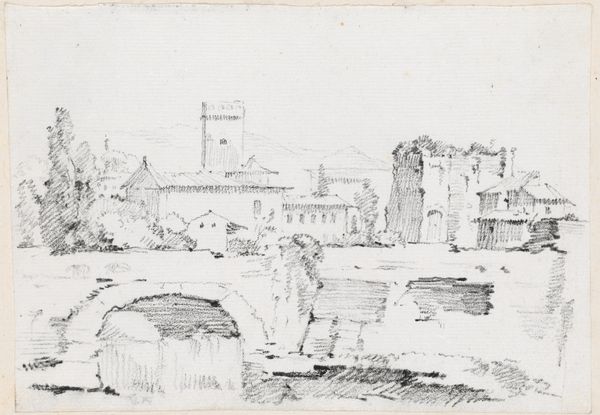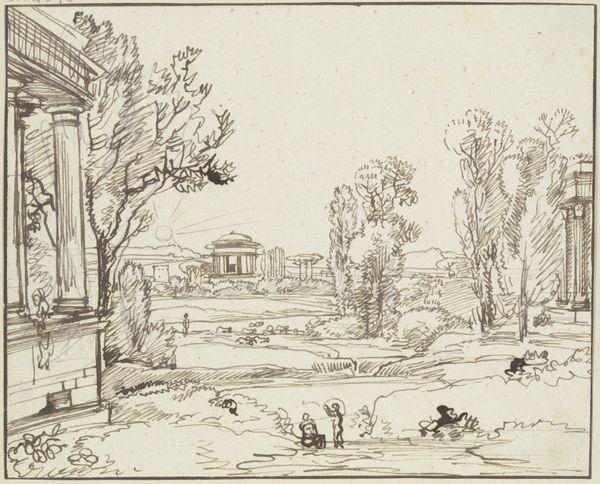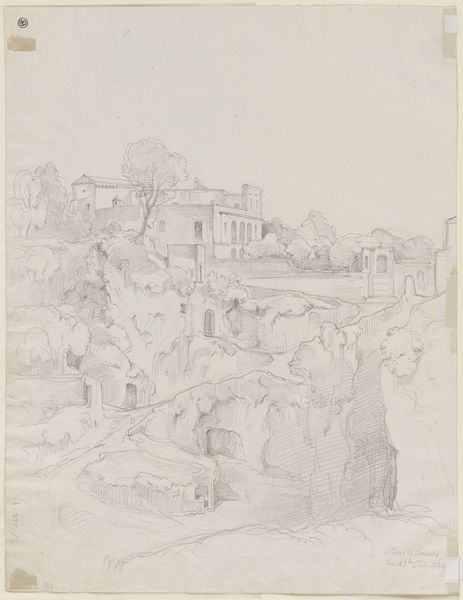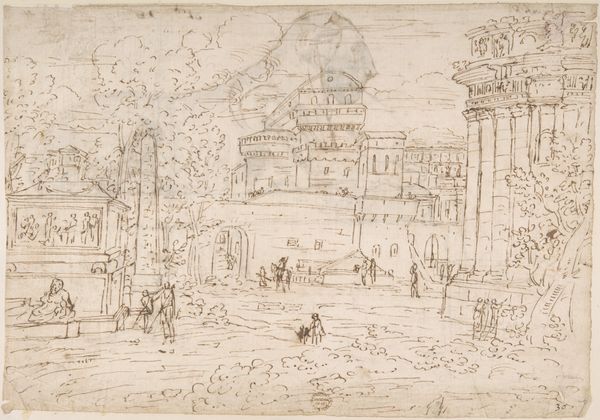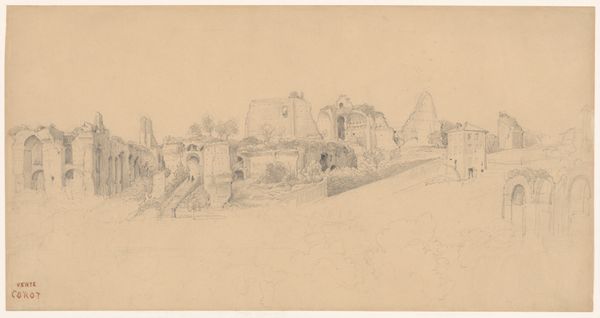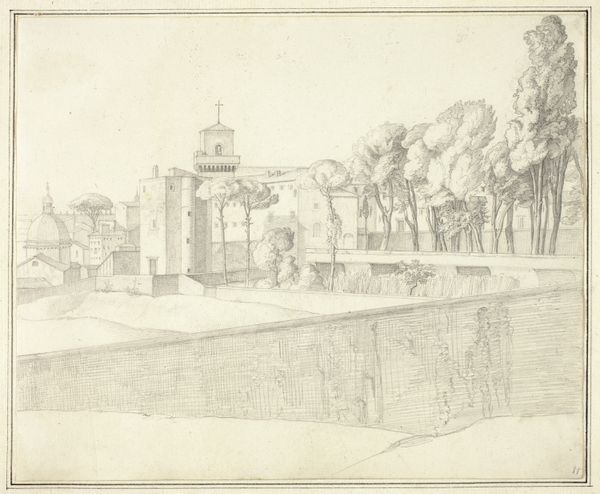
drawing, print
#
drawing
#
toned paper
#
ink painting
# print
#
pencil sketch
#
human-figures
#
incomplete sketchy
#
house
#
charcoal drawing
#
possibly oil pastel
#
oil painting
#
road
#
underpainting
#
human
#
watercolour illustration
#
watercolor
Dimensions: 7 1/2 x 16 5/8 in. (19 x 42.3 cm)
Copyright: Public Domain
Curator: Immediately, I feel a somber yet reverent mood emanating from this toned drawing of Rome. The limited palette gives it the air of something recalled, perhaps even mournful. Editor: Indeed, it is quite restrained. What can you tell us about this cityscape rendered in ink? Curator: This is a piece by Gillis van Coninxloo entitled, “View of St. John Lateran, Rome," created sometime between 1560 and 1607. St. John Lateran is an important landmark that resonates across social strata, from the papacy to the common pilgrim. Van Coninxloo’s depiction seems purposefully subdued, don't you think? Editor: Yes, quite. It almost feels like he’s documenting a bygone era rather than celebrating the vibrant heart of Rome. The stark lines defining the architecture against the toned paper almost seem to foreshadow future conflict rather than suggest historical permanence. Curator: It's the figures too. Their diminutive size accentuates the grandeur, or perhaps the immensity and dominating force of the Church, literally towering over everyday lives. It serves as a psychological prompt, urging the viewer to confront power structures. Even the very materiality suggests austerity: ink and paper lending an immediacy, lacking in grandeur of an altarpiece in oil. Editor: But in this lies the drawing’s strength, perhaps. The contrast highlights not just religious power but also its public role and reach. The carefully placed figures seem like actors on a stage designed to underscore the city's social and political landscape, with religion quite visibly watching over them. How might contemporaries have received such an image, do you suppose? Curator: The effect on a contemporary audience must have been profound. To see a prominent landmark rendered with such delicate detail and careful balance is not only a representation of religious structure but also offers insight into a deeply structured social organization. Editor: An architectural embodiment, perhaps, of enduring spiritual beliefs within a temporal state. Thanks for drawing out these compelling symbolic layers in van Coninxloo’s composition! Curator: It’s always a pleasure to analyze works that speak quietly, yet resonate with such depth and continuing force through shifting social dynamics.
Comments
No comments
Be the first to comment and join the conversation on the ultimate creative platform.
